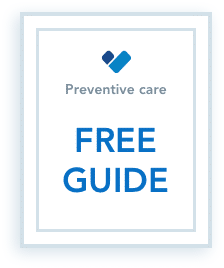Projecting an underemployed client’s income during the coronavirus pandemic
Advice in this article is subject to change. We will make updates as needed.
In a matter of weeks, the COVID-19 pandemic has shut down entire sectors of the U.S. economy. According to the Labor Department’s report, for the week ending March 21st, 3.28 million Americans filed for unemployment benefits last week.
As a health insurance agent, you’re almost guaranteed to meet new clients who have no idea when they’ll be employed again, especially since the outbreak’s current effect on the U.S. economy may become a lasting recession.
The information in this article may very well change in the coming days with the passing of the current stimulus package. Here is some tangible information to help you and your clients guess their projected income today.
Where to calculate weekly benefit amounts for unemployment claims
The amount of unemployment income (UI) your client receives depends on their state, past wages and the reason for job separation. The following links and excerpts should help you estimate your client’s weekly benefit amount (WBA). In most cases, your client will need to file their claim and wait for the state to mail back a statement before they know how much UI they will receive.
We will continue to add information for other states:
California —
- UI calculator: https://www.edd.ca.gov/unemployment/UI-Calculator.htm
- How UI is computed: https://www.edd.ca.gov/pdf_pub_ctr/de8714ab.pdf
- The WBA ranges can range from $40-$450 [1]
Florida —
- Florida unemployment calculator: https://www.florida-unemployment.org/calculator
- CONNECT site to file claims: https://connect.myflorida.com/Claimant/Core/Login.ASPX
- The WBA is calculated by dividing your total earnings for the highest paid quarter of the base period by 26, up to a current maximum of $275 per week. [2]
Georgia —
- Unemployment insurance FAQs: https://dol.georgia.gov/faqs-individuals/individuals-faqs-unemployment-insurance
- For benefit years beginning on or after July 1, 2019, the minimum WBA is $55 and the maximum is $365. The maximum number of weeks a claim can be established ranges from 14 to 20 weeks.
Illinois —
- WBA Chart: https://www2.illinois.gov/ides/IDES%20Forms%20and%20Publications/CLI110L.pdf
- Unemployment Insurance Benefits Handbook: https://www2.illinois.gov/ides/IDES%20Forms%20and%20Publications/CLI105L.pdf
- The WBA is calculated by multiplying the average amount of weekly wages paid during the client’s two highest quarters by 47%. The maximum number of weeks is 26 weeks.
Michigan —
- Unemployment Insurance FAQS: https://www.michigan.gov/leo/0,5863,7-336-78421_97241_98585—,00.html
- Unemployment benefits handbook: https://fileunemployment.org/unemployment-benefits/virginia-unemployment-benefit-calculations/
- The WBA is calculated by multiplying the highest amount of wages paid to you in any base period quarter by 4.1 percent. The number of weeks allowed is determined by multiplying the client’s total base period wages by 43%, dividing by your WBA and rounding down to the nearest half week. The maximum weekly benefit payment is $362 and the maximum number of weeks is 26 weeks.
New York —
- UI calculator: https://labor.ny.gov/benefit-rate-calculator/
- Unemployment Insurance FAQs: https://www.labor.ny.gov/ui/claimantinfo/beforeyouapplyfaq.shtm#10
- We calculate your original benefit rate based on your actual high calendar quarter wages. Your weekly benefit rate is 1/26 of the high quarter wages paid to you in your base period, or 1/25 if your high quarter wages are less than $3,575. The current maximum weekly benefit rate is $504. Although your claim lasts one year (your benefit year), during that time you can only receive 26 times your full weekly rate.
North Carolina —
- Eligibility criteria: https://des.nc.gov/apply-unemployment/before-you-apply
- The DES determines your weekly benefit amount by adding your wages earned in the last two quarters of the base period and dividing that number by 52, up to a maximum benefit of $350 per week. Benefits are available for up to 20 weeks. [3]
Texas —
- UI eligibility & benefit amounts: https://twc.texas.gov/jobseekers/eligibility-benefit-amounts#unemploymentEligibility
- The WBA will be between $69 and $521 and is calculated by dividing your base period quarter with the highest wages by 25 and round to the nearest dollar.
Virginia —
- Unemployment Insurance FAQs: http://www.vec.virginia.gov/faqs/general-unemployment-insurance-questions#a111
- Currently the maximum weekly benefit amount is $378 and the minimum is $60. Individuals must have earned at least $18,900.01 in two quarters during the base period to qualify for the maximum weekly benefit amount. Otherwise, weekly benefit amount is calculated by using the formula 1/50 of 2 High Quarters in the last 5 [4]. Benefit duration varies from 12 to 26 weeks, also depending on wages earned in the base period.
Wisconsin —
- Weekly benefit rate chart: https://dwd.wisconsin.gov/uiben/handbook/pdf/wbrchart.pdf
- Computing benefits and eligibility: https://dwd.wisconsin.gov/uiben/handbook/english/contentspart5.htm
- The weekly amount of unemployment benefits you are paid when you have no wages or other income during the week. It is 4% of the total high quarter wages from all covered employment. The maximum and minimum benefit rates are determined by UI law. The minimum WBR is $54, requiring high quarter earnings of $1,350; and the maximum WBR is $370, requiring high quarter earnings of $9,250.
The CARES Act: What we do know
As written, the CARES Act (the current stimulus package) includes multiple relief measures for unemployed Americans. It includes the following relief measures:
- An extra UI of $600/week for up to 4 months.
- If their adjusted gross income is less than $75,000 ($150,000 if married), individuals can receive a $1,200 rebate and additional $500 per child.
For APTC eligibility, these relief measures will need to be included in your client’s projected annual income. You will need to include the extra $600 WBA in your clients’ current monthly income as well.
We advise that you reach out to your clients before they take on any of these relief measures and determine how fully using these benefits will affect their Cost Sharing Reduction (CSR). As a reminder, CSR’s are based off of your client’s annual income compared to the federal poverty level (FPL). Your client’s monthly premium may drastically increase if these relief funds tip them over 200% or 400% FPL.
Let us know what other information might be helpful either in the comments or through this form.
[1] https://www.edd.ca.gov/about_edd/coronavirus-2019.htm
[2] https://www.nolo.com/legal-encyclopedia/collecting-unemployment-benefits-florida-32505.html
[3] https://www.nolo.com/legal-encyclopedia/collecting-unemployment-benefits-north-carolina.html
[4] https://fileunemployment.org/unemployment-benefits/virginia-unemployment-benefit-calculations/













Leave a Comment